Can I Make Ricotta Cheese From Cream Cheese
Milk, optional cream, lemon juice, and a few minutes of hands-on time are all you need to make the creamiest, smoothest, most delicious homemade ricotta cheese. You won't believe how easy and foolproof this recipe is! You'll never want to go back to store bought again.
Homemade Ricotta Cheese is so lush and decadent
I love the creamy richness of fresh ricotta cheese. It's so lush and so decadent. You would never catch me eating a spoonful of store bought ricotta, but fresh, Homemade Ricotta Cheese is so good. You know when you keep tasting it and each time you're like Wow! I can't believe how good this is? That's this ricotta.
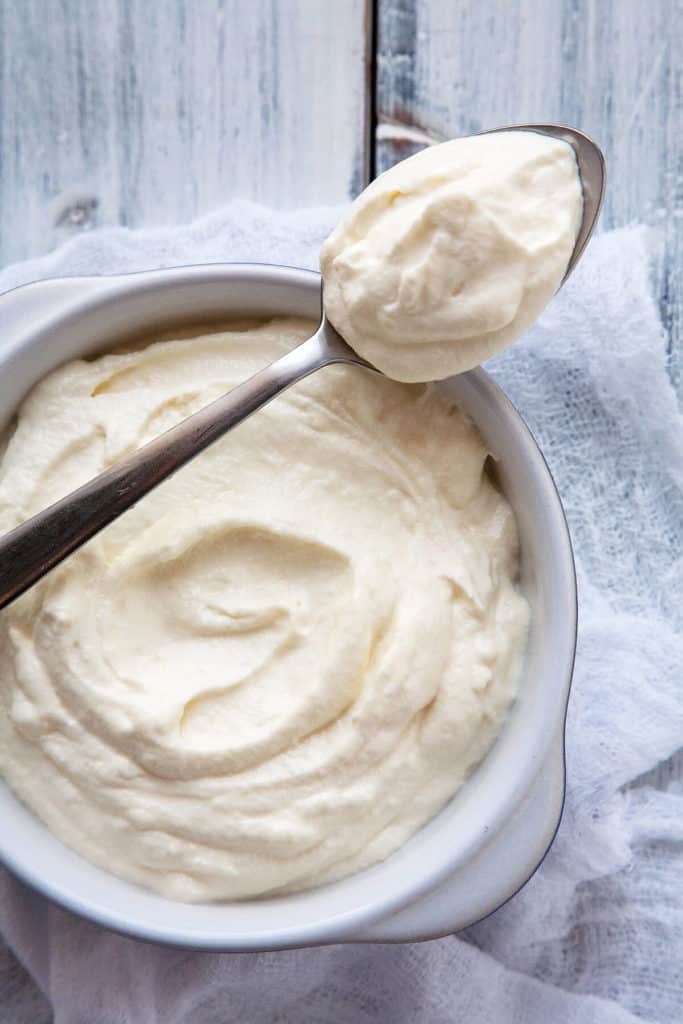
How is Ricotta traditionally made?
Ricotta is the Italian word for "re-cooked," which describes the two-stage heating and coagulation process that goes into making cheese and then ricotta.
First, cheese is made from milk using rennet. The casein proteins in the milk bond forming the cheese, (including much of the dairy fat), leaving the whey proteins.
The whey is then heated again, allowing the whey proteins to coagulate, forming ricotta curds.
What is Homemade Ricotta made out of?
Unless you have leftover whey from making cheese with rennet at home, you can't make the traditional ricotta. You can, however, make a cheese that is very similar to a true ricotta. While technically a fresh cheese, it has a much better taste and texture than the ricotta you can buy in a tub in the supermarket.
Milk, with or without the addition of cream, is heated and acid, usually in the form of lemon juice or vinegar, is added which causes the proteins to coagulate and form curds. These curds, when strained, form the ricotta.
Homemade Ricotta made with milk or milk and cream
I have two recipes for ricotta that I really love, one with milk and one with milk and cream. The recipe with only milk yields a product that is closer to a true ricotta.
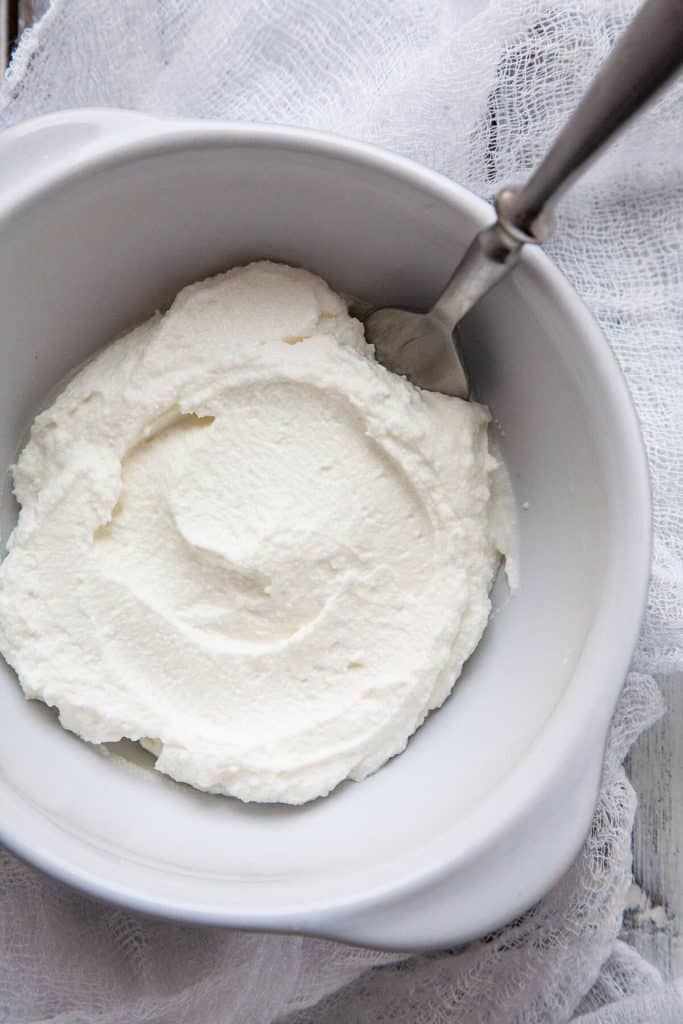
The recipe with milk and cream yields a product that is so heavenly and luscious. This is the recipe I use when I'm feeling particularly indulgent to dollop on top of pancakes or as a topping for toast with fresh fruit. It's also amazing in ravioli or cannoli.
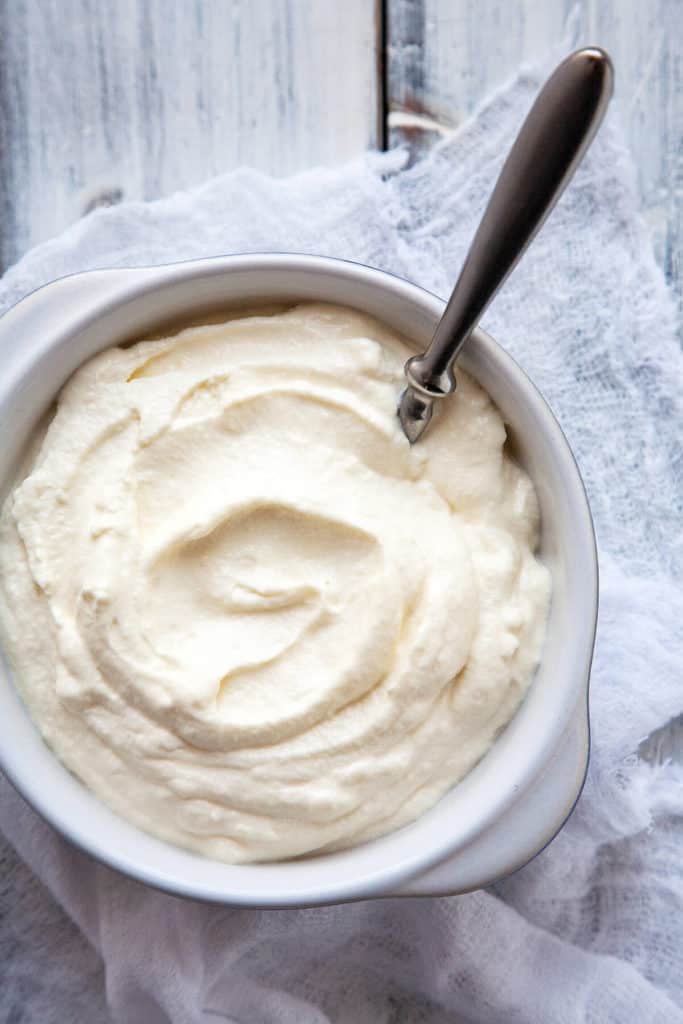
I've given the recipe and instructions for both below.
How to make Homemade Ricotta Cheese with milk
If you want a ricotta that is closer to a traditional ricotta and made with only milk, heat the salt and milk to 185 F. Turn off the heat, and gently stir in the acid, just a time or two around the pan, then let rest, untouched for 20 minutes. During this time, keep the temperature at about 185 degrees F. It can go down to 175 F or up to 190 F, but try to keep it in that range. I just take a look at the thermometer every so often and turn on the heat for just a little while until it gets in that range. After the resting period, spoon out the curds and strain through a cheesecloth-lined strainer.

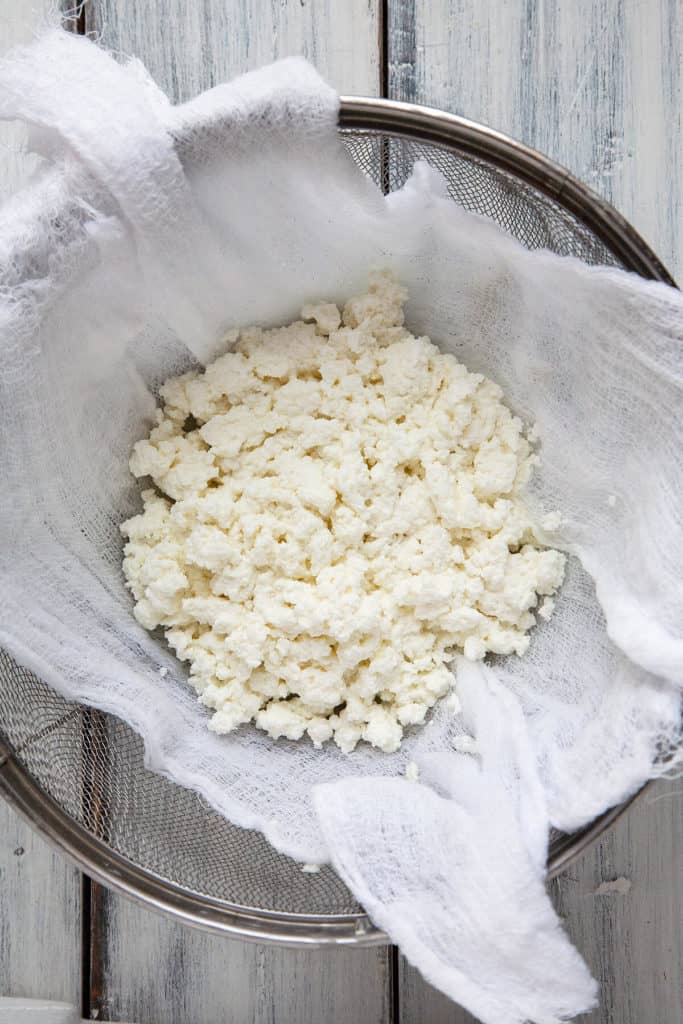
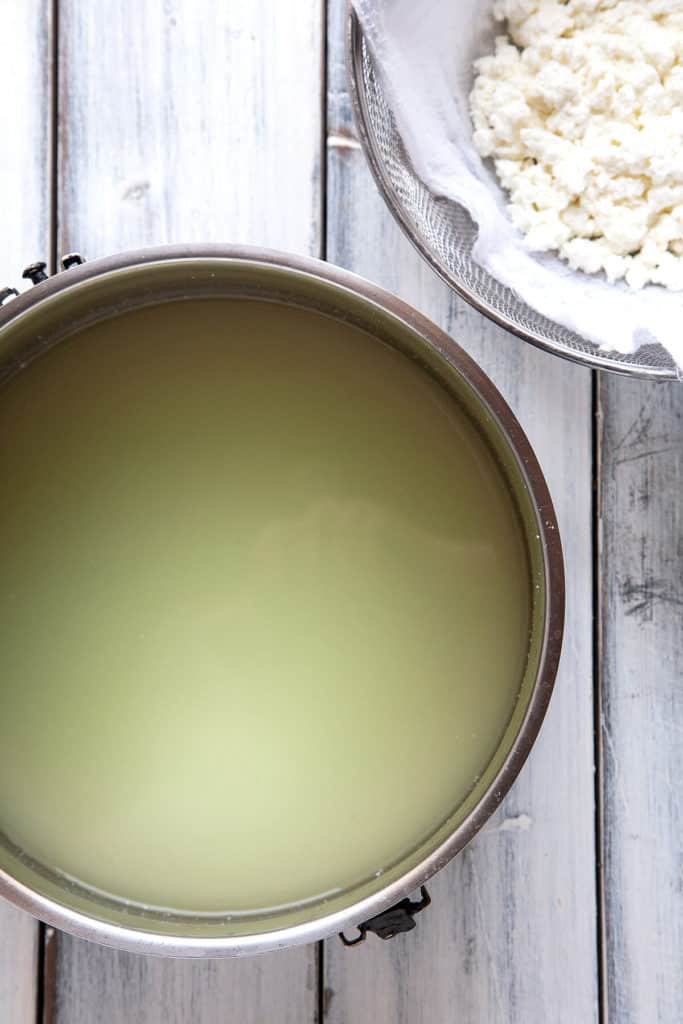
The whey should be clear with a bit of a greenish tinge. If you whey is still milky, you can add a little more acid to help the remaining proteins coagulate.
After the ricotta is done straining, I either give it a good whipping or put it in the food processor for a few seconds. It does wonders for the texture. It becomes so smooth and creamy.

How to make Homemade Ricotta Cheese with milk and cream
Bring milk and cream just up to a boil, then turn off the heat and gently stir in salt and lemon juice, just a time or two around the pan. The curds should form pretty quickly. After they start forming, don't stir, it may break apart the delicate curds. Let the curds rest for about 20 minutes, then strain the curds through cheesecloth. This is a less hands on method that doesn't require a thermometer.
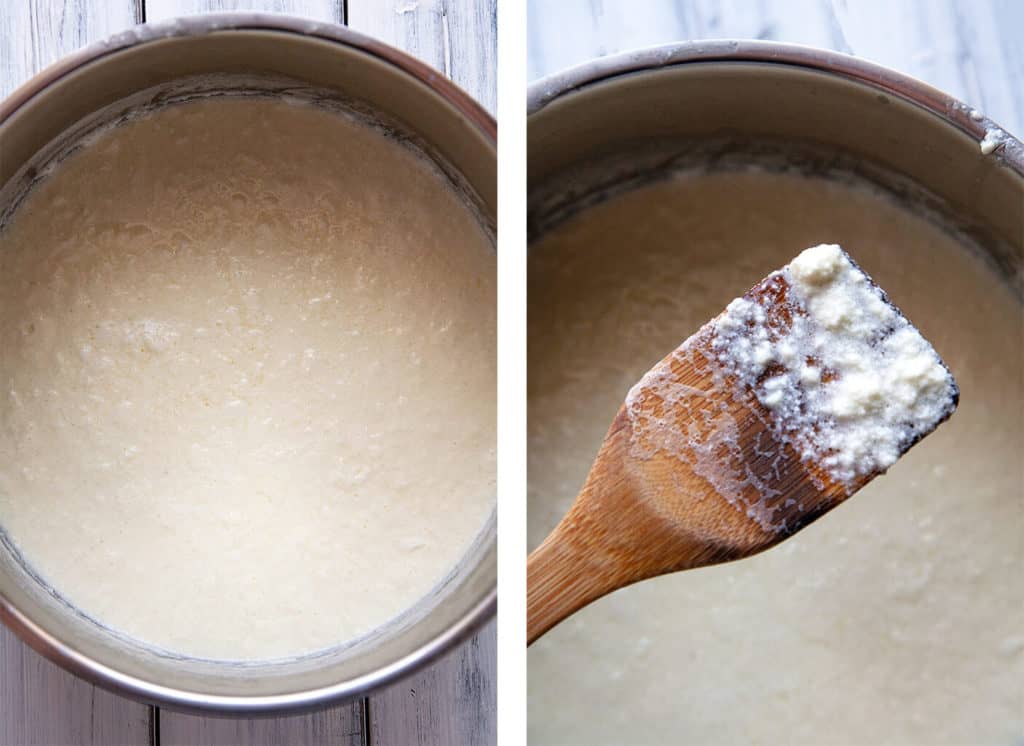
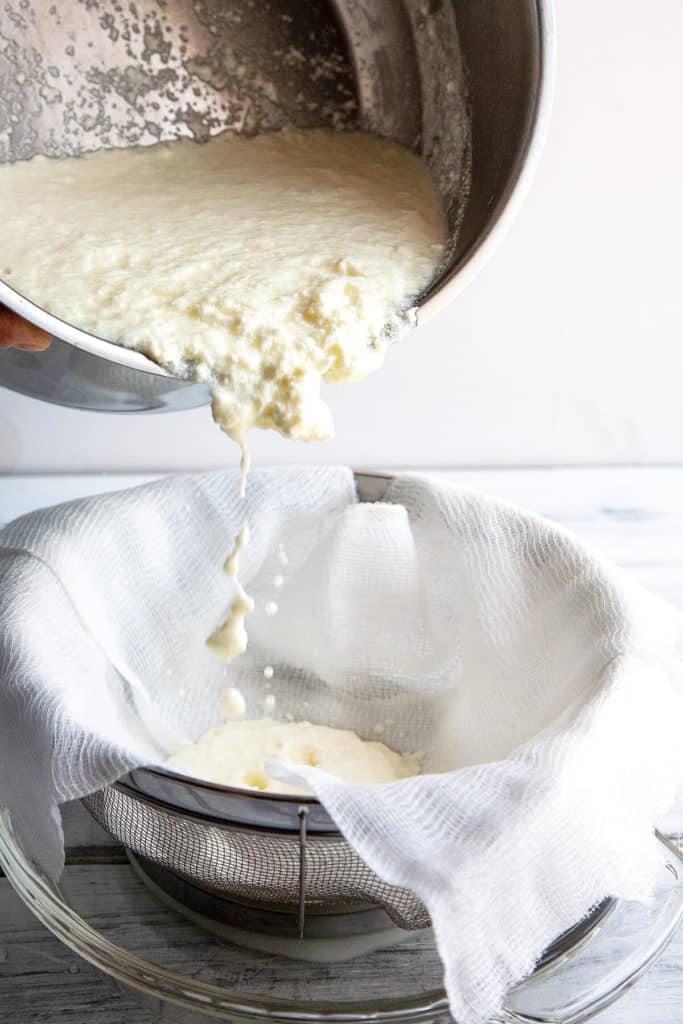
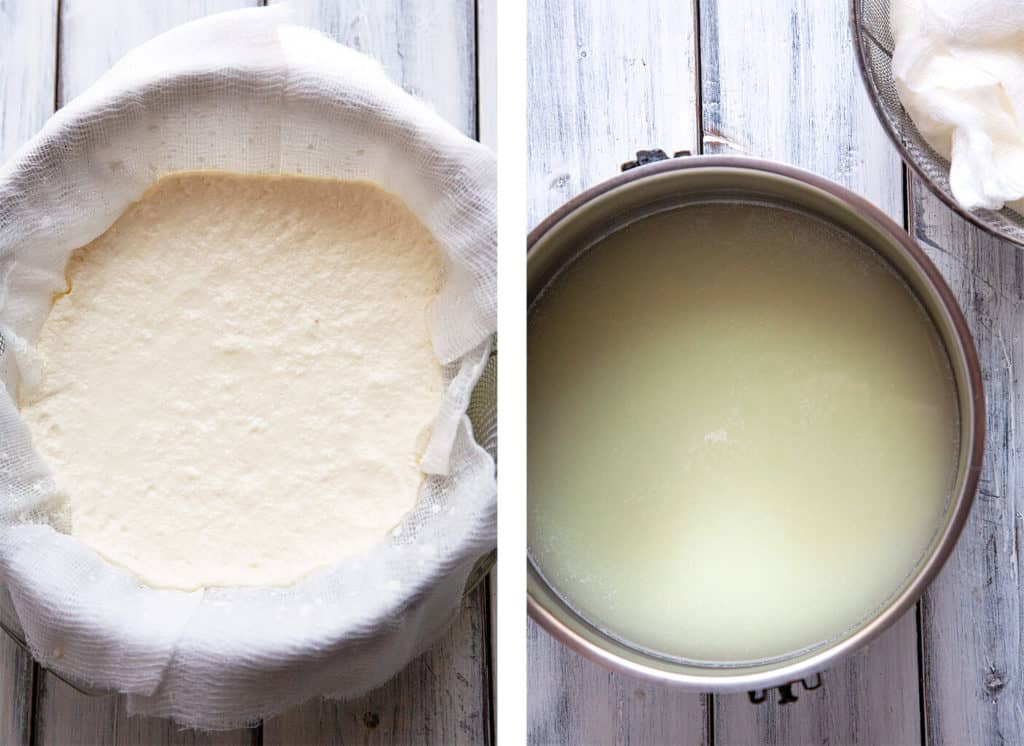
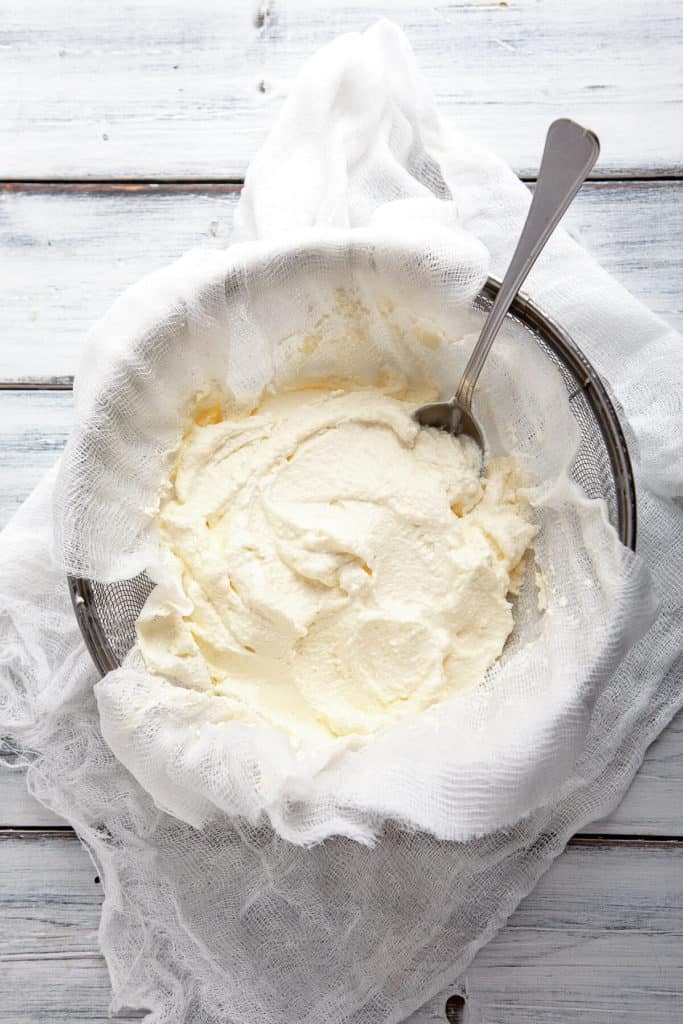
What kind of milk do I use to make Ricotta
I use whole milk for the milk only ricotta. I use a combination of whole milk and cream for the richest, creamiest ricotta you can imagine.
Making Homemade Ricotta Cheese works best when using whole milk, but you can also make it with 2% milk.
Homemade Ricotta can be made using raw milk since the heating during curd formation more than meets heat requirements for pasteurization.
Avoid using UHT (ultra-high temperature) pasteurized milk. The high heat changes the protein structure of the milk and prevents it from separating. Many national organic brands are ultra-pasteurized so check the label.
How much Ricotta does this recipe yield?
For the milk only ricotta, 8 cups of whole milk yields about 1.5 cups ricotta. (This batch weighed 14 ounces.) This can vary depending on how much you strain the final cheese.
For the milk and cream ricotta, 4 cups of milk and 2 cups of cream yield about 2 cups of ricotta. (This batch weighed 16 ounces.) Once again, this can vary depending on how much you strain the final cheese.
What type of acid is used in making Homemade Ricotta Cheese?
You can use lemon juice or vinegar to make ricotta. I love the light, fresh taste of ricotta made with lemon. Vinegar has more of a neutral, savory taste.
When making ricotta with only milk, I've noticed a slight difference in the texture of ricotta made with lemon juice vs. vinegar. I made them side by side to compare them. The ricotta made with vinegar coagulated very quickly in bigger curds. After it drained, it had more of a compressed, tighter curd. The ricotta made with lemon juice coagulated more slowly, with a finer, more delicate curd.
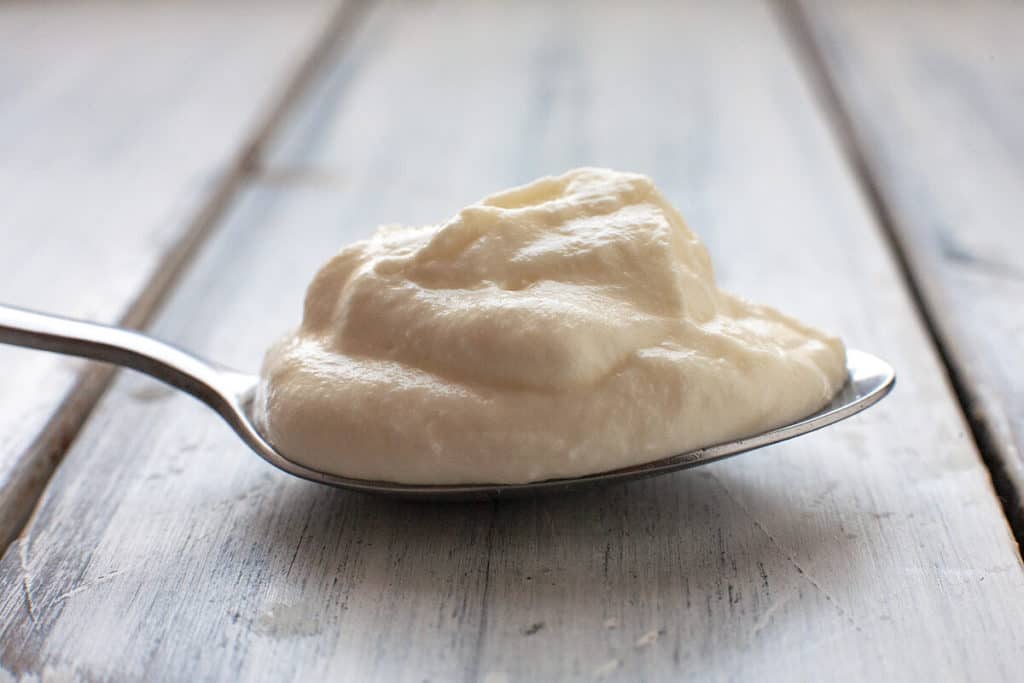
Homemade Ricotta made with milk and cream
How much acid should I use?
Making Homemade Ricotta is part science and part art. Acid is what makes the milk proteins separate and coagulate. A good amount of acid ensures that most of the proteins coagulate and gives a good yield of ricotta curds. Using enough acid makes making ricotta nearly foolproof. On the other hand, the more acid you use, the more acidic the cheese will taste.
Some traditional ricotta makers don't use any acid, they use only heat. Using less acid will give the final product a truer ricotta taste. However, not using enough acid results in the proteins not coagulating and a low yield of curd. The art is in finding the balance.
For the purists, as pure as we can get with a milk based ricotta, you can make the ricotta with 8 cups of whole milk and 3 tablespoons of acid. The acid taste will be much more understated.
The ricotta using milk and cream uses 4 tablespoons of lemon juice.
How much salt do I use?
The amount of salt you use is really up to personal preference. I like about 1 teaspoon in the milk only ricotta and 1 ½ teaspoons in the ricotta made with milk and cream. Traditional ricotta makers use little to no salt.
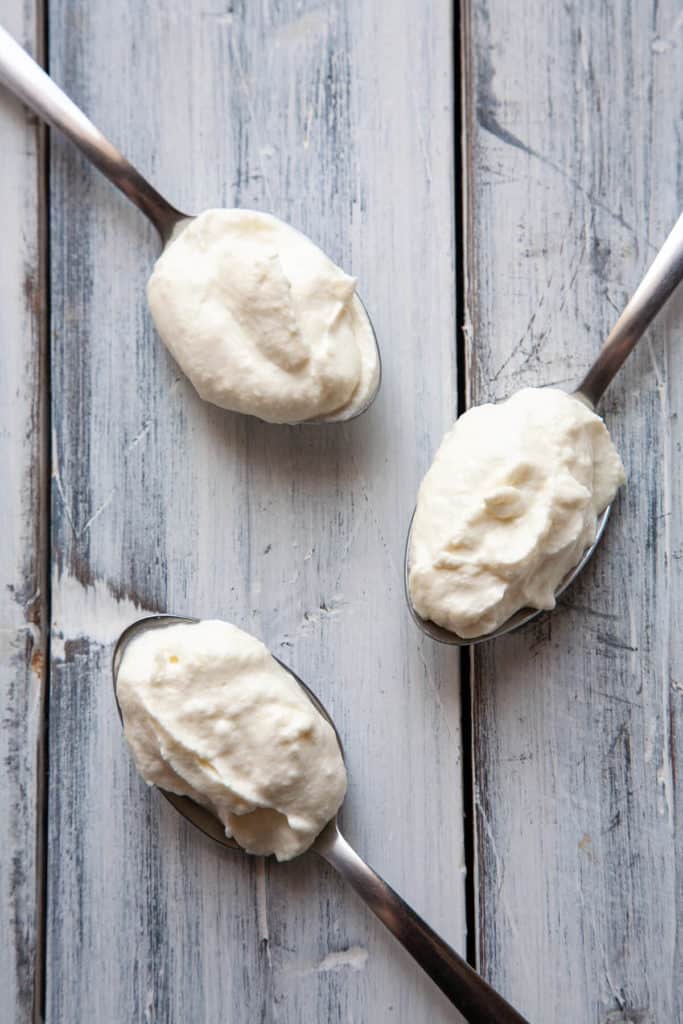
Homemade Ricotta made with milk and cream
How long to strain Homemade Ricotta Cheese?
How long you strain the ricotta depends on the texture you want it to have and which recipe you use.
Generally speaking, drain the ricotta until it's the texture that you want, shorter for a looser ricotta and longer for a firmer, dryer ricotta
The milk only ricotta forms larger curds, especially when making with vinegar. I use a slotted spoon to scoop up the curds and place them in the cheesecloth lined strainer. Pouring all the whey through might clog up the strainer. Milk only ricotta also drains faster for this reason. I strain it for about 30 minutes.
The milk and cream ricotta forms very small delicate curds. These I pour into a cheesecloth lined strainer and let strain for about 2 hours.
The amount of straining time also depends on the size of your strainer. My strainer has a wide, flat bottom, about 8-inches across. It strains a lot quicker than a smaller strainer.
How long does Homemade Ricotta Last?
Homemade Ricotta can be stored in the refrigerator in a covered container for up to five days.
Can Homemade Ricotta be frozen?
Homemade Ricotta can be frozen for up to 2 months. Its taste will be fine, however it's texture may be affected. Since Ricotta has a high moisture content, the moisture in the cheese turns to ice when frozen. After thawing, the texture becomes drier and more crumbly.
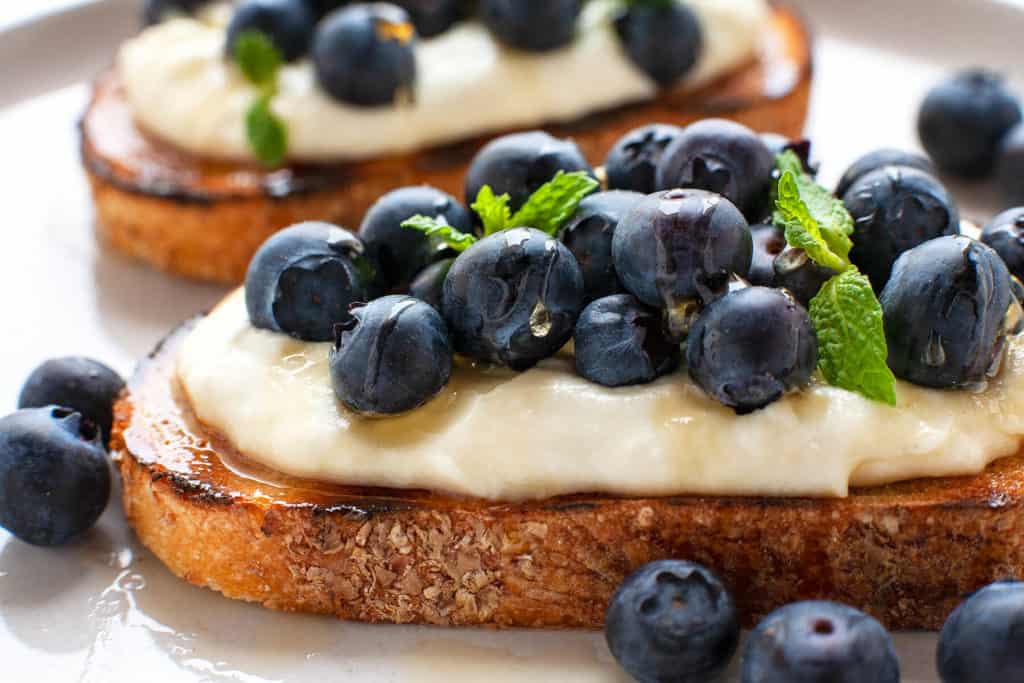
How to serve Homemade Ricotta
There are so many uses for Homemade Ricotta. I used to use Ricotta mainly for lasagna or ravioli. After I discovered how amazing Homemade Ricotta is, I love eating it on crostini. Here are some ideas:
- In lasagna
- In ravioli
- As a topping on pizza
- As a spread on toast or crostini topped with fresh or roasted fruit and honey
- As a spread on toast or crostini topped with tomatoes marinated in basil and balsamic
- In an Italian cheesecake
- In cannoli
- Dolloped on top of pancakes or waffles
- In pancakes or waffles
- In a pasta sauce
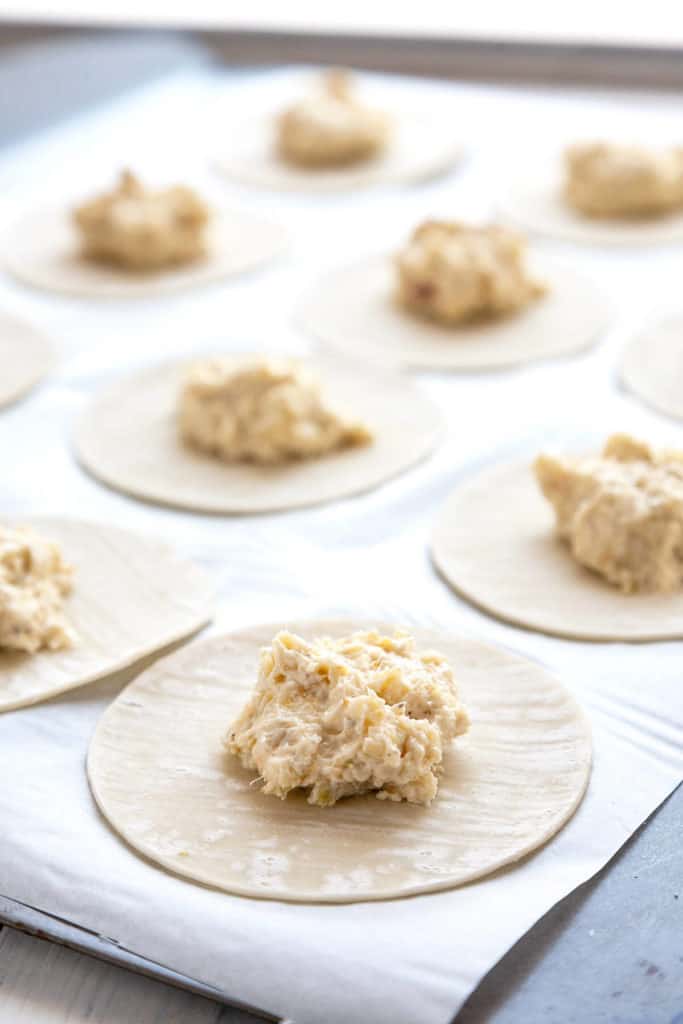
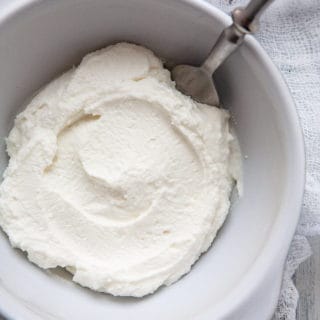
Homemade Ricotta (2 ways)
The creamiest, smoothest, most delicious homemade ricotta cheese. You won't believe how easy and foolproof this recipe is!
Prep Time 5 mins
Cook Time 20 mins
Total Time 25 mins
For Ricotta made with MILK ONLY:
- 8 cups (2 L) whole milk, not ultra-pasteurized
- Kosher or sea salt to taste (I use 1 teaspoon)
- 3 tablespoons (45ml) distilled white vinegar or fresh lemon juice
For Ricotta made with MILK AND CREAM:
- 4 cups (1 L) whole milk
- 2 cups (1/2 L) heavy cream
- Kosher or sea salt to taste (I use 1 1/2 teaspoons)
- 1/4 cup (60ml) fresh lemon juice
For Ricotta made with MILK ONLY:
-
Heat the salt and milk to 185 F (It will start to look a little foamy on top.)
-
Turn off the heat, and gently stir in the acid, just a time or two around the pan. Don't over stir or it will break the curds. The curds should form almost immediately.
-
Without stirring, let the curds rest, untouched for 20 minutes.
-
During this time, keep the temperature at about 185 degrees It can go down to 175 F or up to 190 F, but try to keep it in that range. I just take a look at the thermometer every so often and turn on the heat for just a little while until it gets in that range.
-
After the resting period, spoon out the curds and strain through a cheesecloth-lined strainer.
-
Let drain until it reaches the desired consistency.
-
For a creamy smooth ricotta, either whip by hand or process in a food processor for a few seconds.
-
Store in a closed container in the refrigerator for up to 5 days.
For Ricotta made with MILK AND CREAM (no thermometer):
-
Bring milk, cream, and salt just up to a boil (not a full boil, more of a simmer).
-
Turn off the heat and gently stir in the lemon juice, just a time or two around the pan. The curds should form pretty quickly. After they start forming, don't stir, it may break apart the delicate curds.
-
Let the curds rest for about 20 minutes, then strain the curds through a large cheesecloth lined strainer.
-
Let drain until it reaches the desired consistency.
-
Store in a closed container in the refrigerator for up to 5 days.
Notes:
If the whey looks too milky, add a little more acid to help the formation of the curd.
Let us know how it was!

Enjoy, friends!
Follow me on INSTAGRAM and PINTEREST for all the latest content and recipes!
Subscribe to FOODTASIA'S NEWSLETTER to receive fresh recipes straight to your inbox.
You might also like:
How to Make Crème Fraiche
How to Make Yogurt:
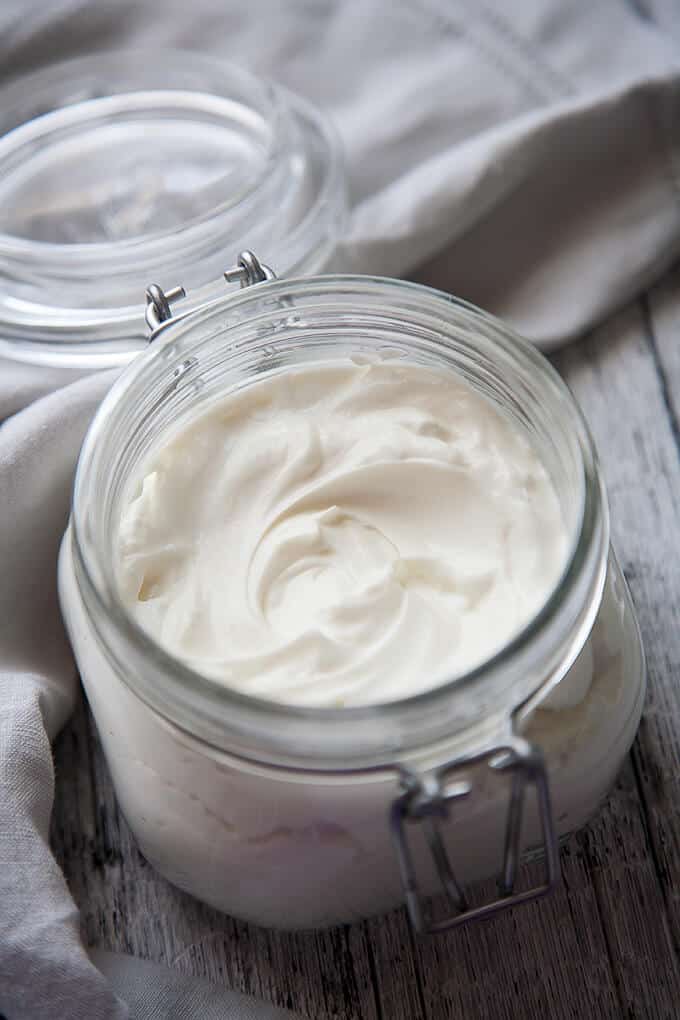
How to make Greek Yogurt:

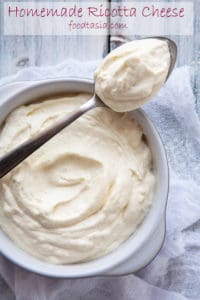
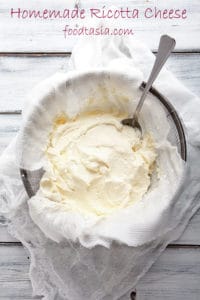
Can I Make Ricotta Cheese From Cream Cheese
Source: https://foodtasia.com/ricotta/